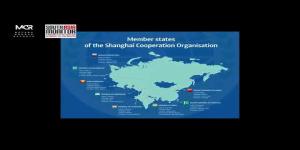South Asian countries must adopt Colombo Process to safeguard migrant labour interest
Since the Colombo Process Ministerial Consultation in Bali, 2005, member states have taken concrete steps to improve the management of labour migration. There has been significant progress in areas of revised policies and regulations. There is greater cooperation between Colombo Process countries and key destination countries. Several initiatives are now in place including awareness-raising campaigns, orientation training, recruitment drives, remittance investment and welfare programmes.

The recent case of Hamida Bano, an Indian woman trafficked to Pakistan and repatriated after 22 years, has again highlighted the need for regional cooperation. It is incredible that human traffickers and those engaged in other illegal activities are able to transcend borders so easily, while bona fide travellers and members of divided families are kept hanging for visas in the region.
Cooperation among South Asian countries is even more essential with President Donald Trump back in the White House. His administration is taking a tougher stance against immigration which may have implications for Southasians going to the U.S.
In January, under the Biden Administration, the U.S. Department of Homeland Security finalized the Employment Authorization Document, a rule that permanently increases the period for renewing automatic employment authorizations from 180 days to 540 days. Claiming the change is dangerous to America, two Republican Senators are seeking to reverse the extension. The change could impact people seeking or holding work permits H-1B visas. According to the U.S. Census Bureau 74% of H-1B visas are held by Indian nationals.
Desperation for work
It took military operations in 2024 to rescue more than 50 Sri Lankans illegally smuggled across the Thailand border into militant-controlled areas of Myanmar. Lured with tourist visas and false promises of IT jobs, they were kept in hideouts and forced to work on criminal cyber operations.
Ministerial discussions between South Korea and Sri Lanka in May last year revealed that of the nearly 100,000 Sri Lankan workers in Korea, nearly 10% do not leave after their work permits expire. Additionally, many workers who go to Korea as seasonal agricultural labourers for six months continue to work in different farms as illegal workers after their work permit expires.
Even members of the elite Sri Lankan armed forces who sought early retirement have taken up jobs as mercenaries, for example in Ukraine, fighting against the Russians. This came to light when a former colonel from Sri Lanka was killed and Ukraine gave him a posthumous bravery award. At least three more Sri Lankan mercenaries have been killed on the battlefield since then.
The increase of migration by labour has created new challenges and issues. Most of these issues are common to all South Asian countries, where irregular migration is a common phenomenon. Trafficking of persons remains a serious concern. Although data and information are scarce, South Asian workers are known to move primarily to the Middle East, and also to South-East Asia, Europe and North America.
The World Bank estimates that out of the 38 million South Asians living outside their countries of origin, the majority are labour migrants. However, there is a lack of more precise data due to various constraints. South Asian countries need to work together to address the challenges of data collection in the region, and improve methodologies and overall data collection quality.
A major issue is that migrant workers, lured by promises of high-paying jobs often face forced labour, long hours, passport confiscation, withheld wages, lack of food and medical care, and abuse. Female domestic workers in Middle Eastern countries are particularly vulnerable to trafficking and exploitation.
The migrant labour sphere has undergone a significant transformation in recent years. Sri Lankan migration resumed in a big way after three years following the Covid-19 pandemic and the economic downturn.
In fact, one of the main reasons for the rise in Sri Lanka’s foreign currency reserves has been the remittances sent by expatriate Sri Lankan workers. The surge in tourism and fiscal restructuring facilities extended by bilateral lenders and the International Monetary Fund have also aided in the nation's return from the brink.
Dhaka dialogue
A seminar in 2024 organised by the Bangladesh Institute of International and Strategic Studies in Dhaka highlighted the emerging challenges of labour migration from South Asia. Participants agreed on the need to work together to secure the migrants’ rights. Collaboration and cooperation is necessary to ensure our workers’ safety, security and well-being in destination countries outside the region.
South Asian countries must adopt a common strategy to safeguard the interests of migrant labour, urged Dr. Benuka Firdousi, a research officer with BIISS, noting that the ‘Colombo Process’ – a forum for sharing best practices in labour migration – is the best available avenue for a consensual formula.
The Process involves 12 member states of the Regional Consultative Process on Overseas Employment and Contractual Labour for Countries of Origin in Asia, working together on labour migration issues. Of the top ten 'emigration countries' worldwide, five – Bangladesh, China, India, Pakistan and the Philippines – are Colombo Process countries.
The forum addresses challenges, proposes solutions for workers' well-being, optimizing development benefits, and fostering dialogue between countries. It also monitors and reviews the implementation of recommendations.
The Colombo Process dialogues drew attention to the continued structural need and demand for labour migrants globally, in particular in the Middle East. Migration from the region also contributes to socio-economic growth and development in countries of origin and destination.
Since the Colombo Process Ministerial Consultation in Bali, 2005, member states have taken concrete steps to improve the management of labour migration. There has been significant progress in areas of revised policies and regulations. There is greater cooperation between Colombo Process countries and key destination countries. Several initiatives are now in place including awareness-raising campaigns, orientation training, recruitment drives, remittance investment and welfare programmes.
In economic terms, remittances received by Colombo Process countries more than doubled from USD 84 billion in 2005, to USD 173 billion in 2010. In 2024, the figure increased to USD 397 billion.
The South Asian Association for Regional Cooperation, SAARC, has drafted several reports on migrant worker issues and proposed solutions. Unfortunately, the regional organisation has been unable to make progress on this issue and others due to lack of cooperation between certain member states.
The profile of migrants has changed significantly and become more differentiated over time: while in the 1970s the majority of migrants were male and predominantly worked on construction projects as low-skilled labourers, many are now employed in semi-skilled or skilled jobs.
Rising demand
Since the 1990s, rising demand for domestic workers in the Middle East and Asia has led to a drastic increase in the number of women migrant workers. In the case of Sri Lanka, women account for more than 50 percent of emigrants.
Between 2012 to 2017, labour migrants from five South Asian countries - India, Bangladesh, Sri Lanka, Pakistan and Nepal - recorded annual labour migration ranging from 50,000 to 100,000, according to the International Labour Organization.
In 2023, more than 100,000 skilled workers and nearly 300,000 unskilled workers left Sri Lanka for employment abroad. The sudden increase is due to a Sri Lankan government incentive offering public sector employees two years of unpaid leave to work abroad. They are allowed to retain their seniority in the public sector when they return. Nearly, 100,000 public sector employees including professionals such as doctors, engineers, architects have availed the offer.
The Iraqi invasion of Kuwait in 1990 catalysed the return of almost 80,000 Sri Lankan labour migrants in the Middle East. However, the current trend due to the Gaza-Israel conflict is totally different. Many of the displaced Sri Lankan workers have sought employment in Israel to fill the vacuum opened by Palestinian workers having left or been forced out.
The rapid changes in the socio-economic contexts have exacerbated migrant workers’ vulnerability to irregular migration and human trafficking. Lack of awareness on safe migration pathways and the existing national qualification frameworks have also contributed to this.
Further, upon their return to Sri Lanka, many migrant workers face skills and qualification challenges that hinder their ability to secure decent employment opportunities both locally and abroad. Against this backdrop, an acute need has arisen to support the government's priorities and efforts to mitigate the risks of irregular migration and human trafficking.
Last year, the Government of Sri Lanka launched a four-year project and an action plan with national policy priorities on migration for employment. It also set up a national strategic action plan to monitor and combat human trafficking. The new government is reviewing policy but no amendments have been made so far.
(The author is a journalist, political and strategic affairs commentator and former Sri Lankan diplomat in Colombo. Views expressed are personal. He can be reached at sugeeswara@gmail.com. By special arrangement with Sapan)









Post a Comment